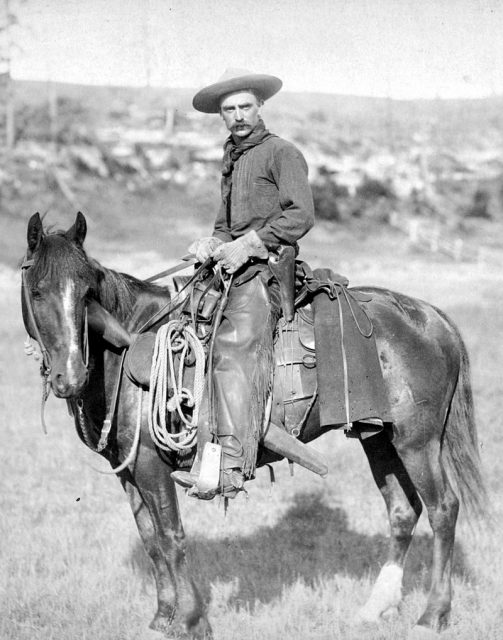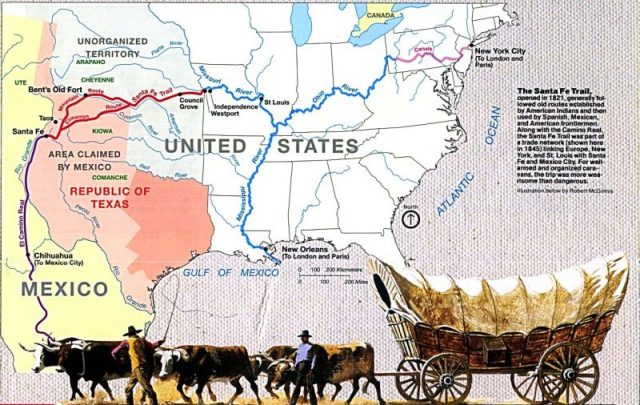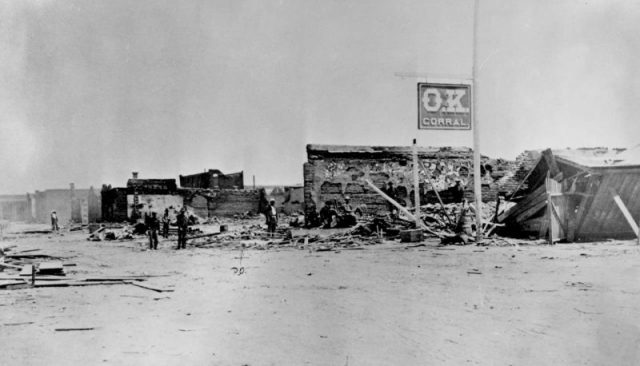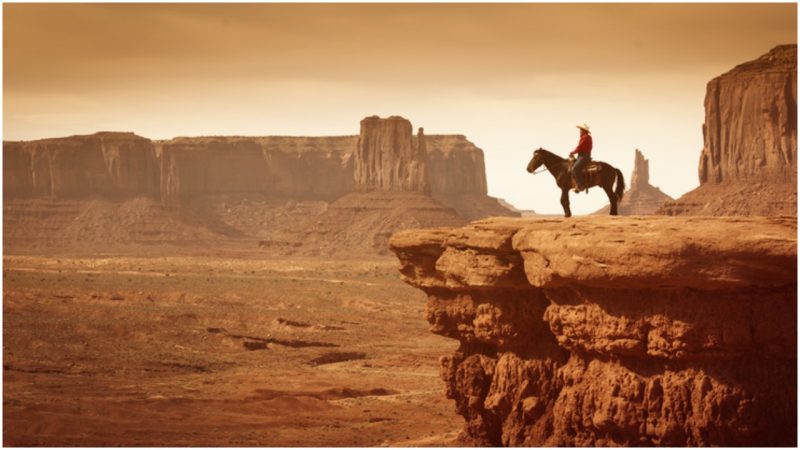The Wild West provides some of the most enduring tenets of American mythology, perpetuated by film legends from Bronco Billy to Clint Eastwood. And no wonder: the lawlessness of the time provided plenty of drama, and the lonely windswept territories, mountainous and arid, provided the cinematic backdrop. The image is indelible: A lonely cowboy clopping across the plains. Cue the Ennio Morricone soundtrack. Ironically, the era that has provided more than 100 years’ worth of celluloid fantasies lasted only 30 years.
In fact, the era known as the Wild West, or the American Frontier, began after the Civil War in 1865 and ended around 1895. The American imperative of Manifest Destiny dictated that the country expand to “overspread the continent allotted by Providence for the free development of our yearly multiplying millions,” as John L. O’Sullivan wrote in the July-August 1845 edition of the United States Magazine and Democratic Review.
The frontier area west of the Mississippi River during the late 1800s included the territories of Dakota, Nevada, Oregon, Utah, Idaho, Montana, Arizona, California, New Mexico, and Colorado. The untamed territories were noted for their lawlessness, which gave rise to wild, rowdy, unrestrained, disorderly, and unruly behavior—which is what made for such great stories in print and on screen. But while much of the culture that is attributed to the Wild West was just normal colonial culture in many parts of America at different times, it became ingrained in people’s imaginations.

“That experience seemed to be regarded as defining uniquely American characteristics and values — traditionally, individualism, self-reliance and an instinctive commitment to democracy,” as David Hamilton Murdoch wrote in The American West: The Invention of a Myth.
Naturally, Hollywood glamorized the truth. Cowboys were illiterate and worked hard, dirty jobs. They weren’t even called “cowboys,” instead they were cattlemen. They wore one set of clothes until they turned into rags, didn’t bathe, or brush their teeth. (Few Americans did at all until an ingenious ad campaign popularized tooth-brushing in 1915.) The truth is, nobody wore Clint Eastwood’s flat-brimmed cowboy hat: it wasn’t practical and furthermore, it was too expensive. There were always men (a few desperate women were virtually captive in sad prostitution and nearly starved), but they came from all over the planet: In Wyoming alone, with a population of 10,000 people, there were at least 56 nationalities, including Germans, Irish, Italians, Swedes, Norwegians, Finns, Chinese, Russians, and Slovakians. Another truth was that the Native Americans who had populated the area and were pushed out were not savage killers but mostly peaceable and friendly, and notably cleaner than the settlers.

And for some more myth-busting: One of the most defining scenes of the Wild West era—the Gunfight at the O.K. Corral—lasted only 30 seconds and didn’t take place at the O.K. Corral at all. The famous gunfight occurred at about 3:00 P.M. on Wednesday, October 26, 1881, in Tombstone, Arizona Territory. The shooting occurred near the current intersection of Third Street and Fremont Street, which is actually behind the corral. Deputy Marshall Wyatt Earp and his brothers Virgil Earp and Morgan Earp, with the support of Doc Holliday, confronted the Clanton Gang of outlaws and cowboys, ironically over the issue of gun control. Billy Clanton and gang members Tom McLaury and Frank McLaury were shot down and killed but Ike Clanton and Billy Claiborne escaped. Virgil Earp and Morgan Earp were wounded, but Wyatt Earp and Doc Holliday were unharmed.

As for the cowboy’s entrance into celluloid history, Bronco Billy Anderson is widely credited as being the first cowboy matinee idol. He starred in the classic 1903 silent black-and-white film The Great Train Robbery. Efficiently cast, he played three roles: tenderfoot dancer, shot passenger, and most memorably, bandit. Advertised as “a faithful duplication of the genuine ‘Hold Ups’ made famous by various outlaw bands in the far West,” the film was a primitive 10-minute one-reeler, but it launched the Wild West film genre that continues to this day.
Bronco Billy himself watched the film in a vaudeville theater and was impressed by the audience’s wildly enthusiastic reaction; he ended up writing and starring in dozens of Western films. His contributions to cinema were so well regarded that Anderson was honored posthumously in 1998 with his image on a U.S. postage stamp. In a fitting footnote to amalgamated U.S. history, Bronco Billy was born Maxwell Henry Aronson, the son of German and Russian Jews.
